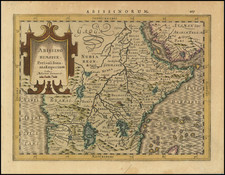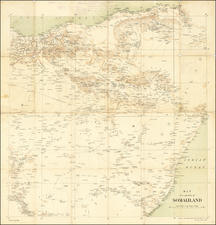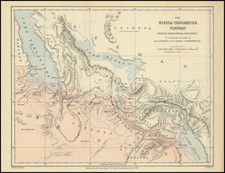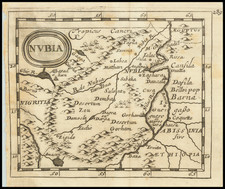Used By An Early Map Scholar?
Detailed English Sea chart of the Southeastern Coastline of Africa, from Mozambique to Cape Town and Table Bay.
The map includes redlining off the coast, with names in Portuguese. While a first blush, the lines look like the charting of an early voyage, this is more likely the work on an early English mapmaker or scholar, attempting to compare this chart with an early Portuguese map, likely the map of Africa by Filippo Pigafetta, recording the observations made by the Portuguese explorer Duarte Lopes between 1578 and 1584 or possibly the Claes map of the southern half of Africa. The meticulous nature of the work is evident, as there are also signs of earlier pencil annotations.
At the dawn of the 18th century, the southern part of Africa, stretching from Cape Bona Esperance to Delagoa, stood as a region of considerable geostrategic and economic importance. This era, marked by the burgeoning influence of European colonial powers, saw the coastline increasingly charted and contested by nations vying for control over maritime trade routes and access to valuable resources.
The map presents a detailed depiction of the coastline, illustrating significant geographical features and settlements. It reflects the increased accuracy in cartography achieved during this period, aided by advancements in navigation and surveying techniques. The Cape of Good Hope, labeled here as Cape Bona Esperance, was especially significant, serving as a critical waypoint for ships traveling between Europe and the East Indies. Control of this region was fiercely contested, primarily between the Dutch, who established a supply station at Cape Colony in 1652, and the British, who showed increasing interest in the area. demand for resources, including human labor. The area includes soundings and several anchorages on the map.
The map's depiction of Delagoa Bay (present-day Maputo Bay in Mozambique) underscores the region's role as a significant point of contact and conflict among European powers and local populations. By the early 18th century, Portuguese influence was predominant in this area, which is marked with a Portuguese flag, but also notes that it is a viable place for "all neceesary's to be hadd".
John Thornton was a respected and prominent chartmaker in London in the latter part of the seventeenth century. He was one of the final members of the Thames School of chartmakers and served as the hydrographer to the Hudson's Bay Company and the East India Company. He produced a large variety of printed charts, maps, and atlases in his career, but he was also a renowned manuscript chart maker. Born in London in 1641, he was apprenticed in the Drapers Company to a chartmaker, John Burston. After being made free of the company (1665), he was part of the combine that took over John Seller’ English Pilot in 1677. Thornton was trusted by the naval and navigational establishment of the day; one of his clients was Samuel Pepys, naval administrator and diarist. Thornton died in 1708, leaving his stock to his son, Samuel, who carried on the business.
Samuel, born in ca. 1665, also had apprenticed in the Drapers Company and was made free a year after his father’s death. He continued the business until 1715, when he died. His stock then passed to Richard Mount and Thomas Page.










![[ With Unusual Annotations in Red ] A Draught of the South Part of Africa from Cape Bona Esperance to Delagoa](https://storage.googleapis.com/raremaps/img/small/99414.jpg)
![Карта Восточной Части Африки [Map of the Eastern Part of Africa]](https://storage.googleapis.com/raremaps/img/small/66634.jpg)


